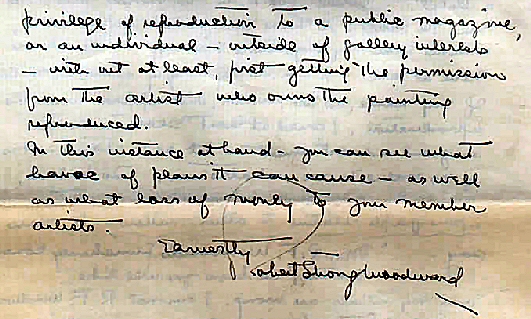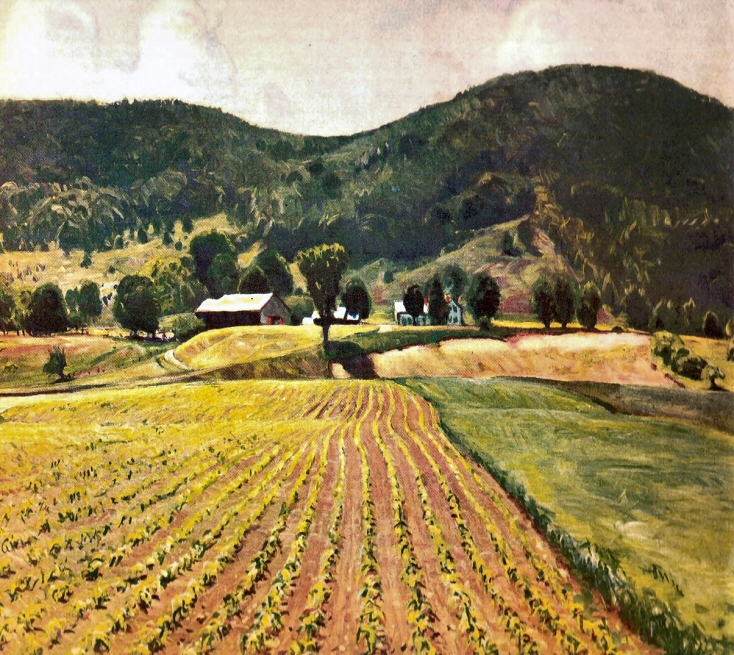Quick Reference
Painted 1933.
Buckland, MA
Oil on Canvas
Landscape
Farm
30 X 36
Boston Art Club, 1933
Southern Vermont AA, 1933
Addison Gal. of Am. Art, 1933
Amherst Coll. Jones Library, 1934
Williston Academy, 1934
Concord (MA) Art Association, '34
Macbeth Galleries (NYC), 1934
Deerfield Academy, 1935
Deerfield Valley AA, 1935
Mt. Holyoke Coll. Dwight Hall, 1935
Albany Institute of Hist. & Art, '37★
> Award: 2nd prize- Landscape
Winchester Art League, 1937
Bartlett Arkell for the Arkell
Museum in Canajoharie, NY
NA
Related Links
- See also the...
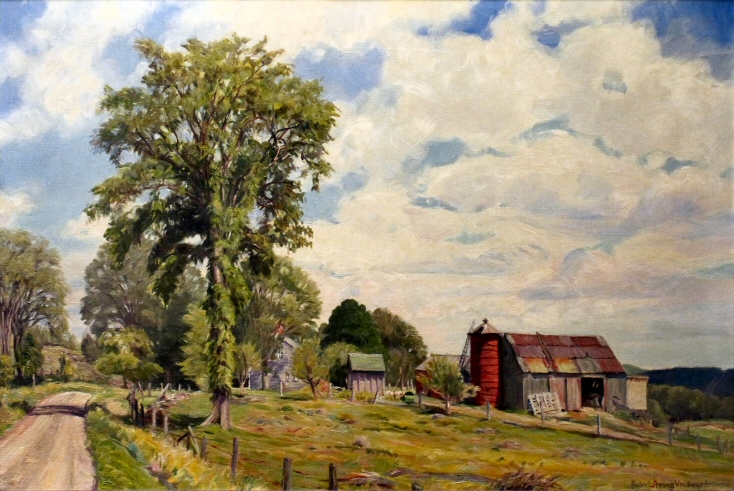 Farms Gallery to view related pieces.
Farms Gallery to view related pieces.
- See also the...
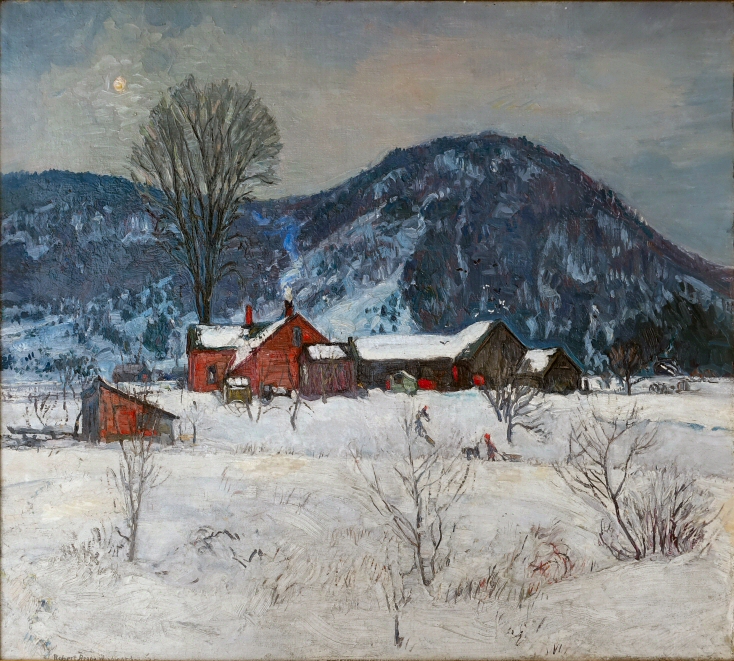 Purinton Hill for related pieces.
Purinton Hill for related pieces.
- See also the...
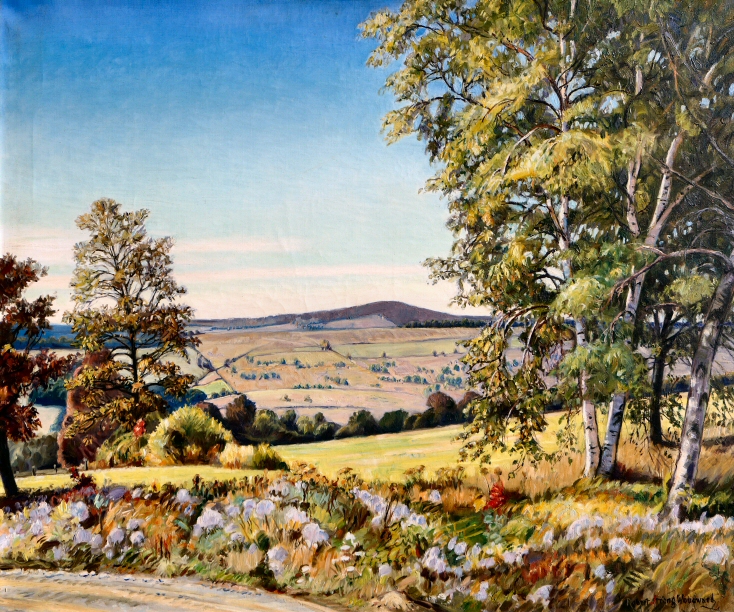 Landscapes & Views Gallery to view related pieces.
Landscapes & Views Gallery to view related pieces.
- See also our list of Woodward's owned by
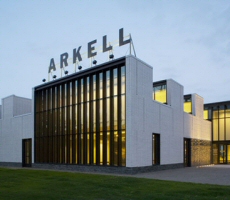 Public Institutions
Public Institutions
- See also the...
180.png) Award Winners Gallery to view related pieces.
Award Winners Gallery to view related pieces.
- See also the...
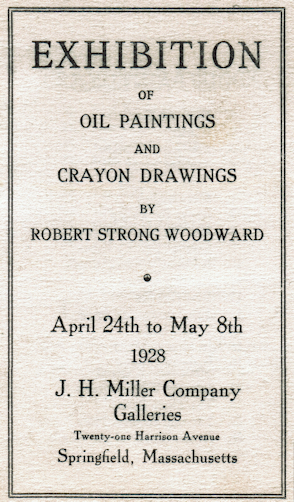 Exhibition List for a complete list
Exhibition List for a complete list
Featured Artwork: June Corn 
RSW's Diary Comments
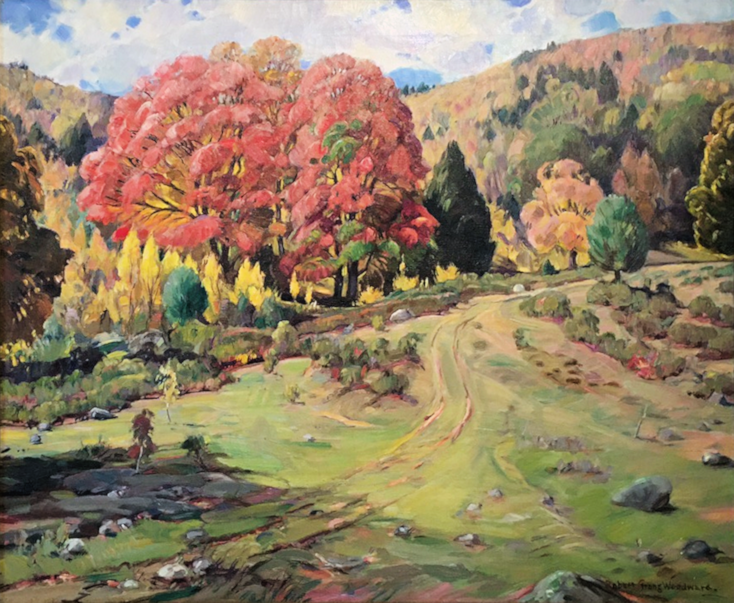
 Unnamed: Goodnow Pasture
Unnamed: Goodnow Pasture
RSW painted a number of canvases of the Goodnow
pasture which is to the left of the farm in the painting
above. For perspective, the painting is looking south
so the left is east towards Ashfield Road (Rt. 112)
"Painted in 1933. Purinton Farm (now Leon Goodnow's) painted from back of old Strohecker House, (now Mr. Wise.) Largely exhibited as one of my outstanding canvases. Awarded 2nd Landscape Prize, at Albany Inst. of History and Fine Arts, 1937. Finally bought by Bartlett Arkell (owner of Beechnut Products) 15 West 10th Street New York City, for the Canajoharie N.Y. Museum, but I believe hung instead in his N. Y. business office."
Editor's Note:
It is clear this is one of Woodward's outstanding paintings and yet like When Drifts Melt Fast seems to get overlooked. Unlike When Drifts Melt Fast, which Woodward kept for himself because he could
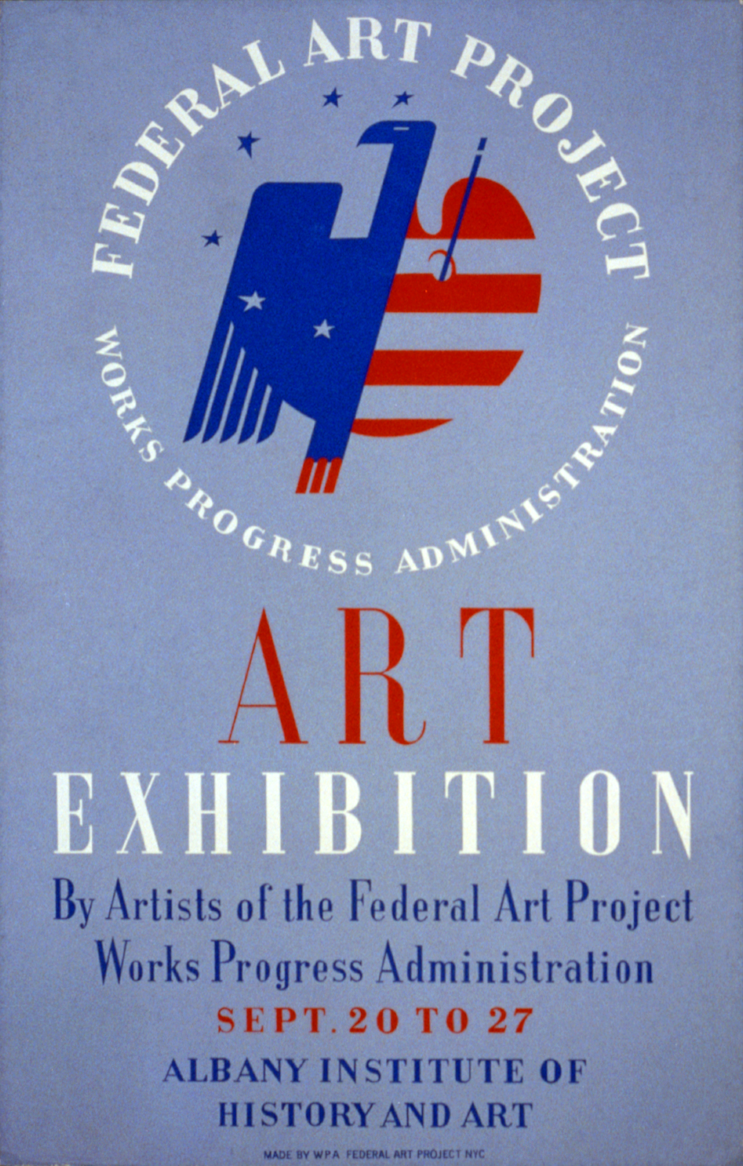
 The 1938 Exhibit Poster
The 1938 Exhibit Poster
from the AIHA Wikipedia page.
See more below...
not find the right home. This painting landed in the Arkell Museum in Cana-joharie
NY. We like that Arkell, who became a friend as well as a supporter, kept it for himself. Hanging it in his office in New York City is as big a deal.
Imagine who got to see it?
The Albany Institute of History and Art (AIHA) is one of the oldest museums in the country. It was
establish in 1791, and has grown and evolved through a number of iterations and mergers with other institutions and organizations to what it is
today. This exhibition, the second of its kind was part of a national program to support artist who qualified for the The WPA Federal Art Project for
which we have newspaper clippings that Woodward had been awarded such a project, however, we have no idea what or if he actually did the work.
The most well known outcome of the Federal Art Project was the murals that decorated many local post offices, courthouses, and state buildings.
Additional Notes
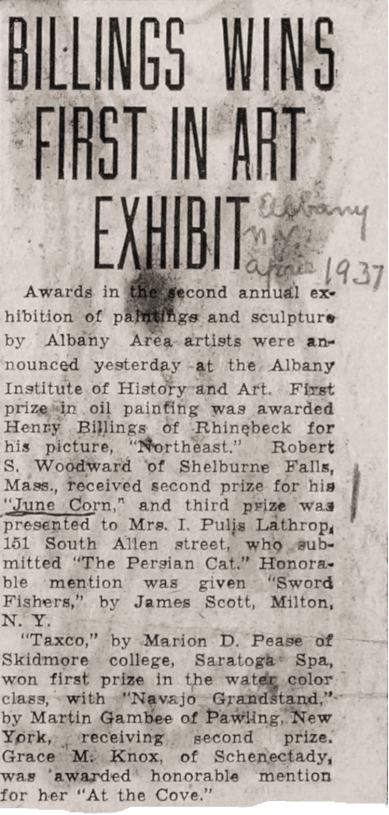
 Albany Times Union, Apr. 3, 1937
Albany Times Union, Apr. 3, 1937
Boston Evening Transcript, Sept. 2, 1933
"...Robert Strong Woodward again shows the great understanding he has of the structure, one might almost call it the anatomy, of a landscape in his June Corn."
Boston Herald, Oct. 1, 1933
" .....Robert Strong Woodward deals with a difficult problem in his rows of June Corn, and produces an attractive, sunny composition."
 The clipping from the Albany Times Union (to the left) announces only the award winners of the 1937
show. It is npt a review. Nonetheless, we can't help but notice Woodward is the only non-local participant listed. All of the others are from the Hudson
Valley area. A quick visit to the AIHA website makes pretty clear
the museum is regional and promotes the local area. Was an exception made for Woodward? Did he qualify to show at the AIHA because of his years
in Schenectady, NY (1900-1903) , where he graduated from the Union Classical Institute? Did Arkell or even the Director of the Syracuse Museum of
Fine Art, Anna Olmsted give their endorsement? Was it perhaps, Woodward association with Pittsfield or the Southern Vermont Artist Assoc. that brought
him to Albany? Let's not also forget that after Woodward's Redgate fire,
the artist worked his way back to respectability by doing small shows in Utica and Troy (1929). We suppose any of or all of those reasons contributed.
The clipping from the Albany Times Union (to the left) announces only the award winners of the 1937
show. It is npt a review. Nonetheless, we can't help but notice Woodward is the only non-local participant listed. All of the others are from the Hudson
Valley area. A quick visit to the AIHA website makes pretty clear
the museum is regional and promotes the local area. Was an exception made for Woodward? Did he qualify to show at the AIHA because of his years
in Schenectady, NY (1900-1903) , where he graduated from the Union Classical Institute? Did Arkell or even the Director of the Syracuse Museum of
Fine Art, Anna Olmsted give their endorsement? Was it perhaps, Woodward association with Pittsfield or the Southern Vermont Artist Assoc. that brought
him to Albany? Let's not also forget that after Woodward's Redgate fire,
the artist worked his way back to respectability by doing small shows in Utica and Troy (1929). We suppose any of or all of those reasons contributed.
First prize went to well known New York artist Henry
Billings. Billings is accomplished. He is known for several things as a muralist, sculptor, and teacher. He painted several post office murals, as well as
a mural of a panther in the Radio City Music Hall in NYC that still exist to this day.
"In 1936 Robert Strong Woodward incidentally discovered an image of this painting on the cover of Farm Journal which greatly disturbed him. The following letter was fired off to the Grand Central Art Gallery:"
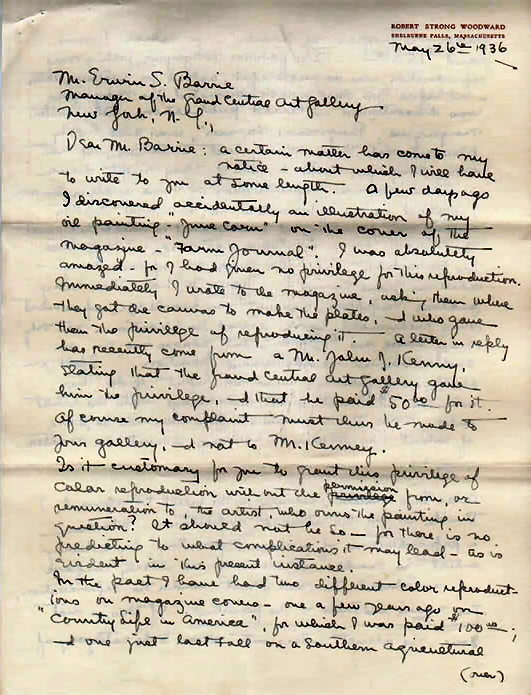
 pg 1
pg 1
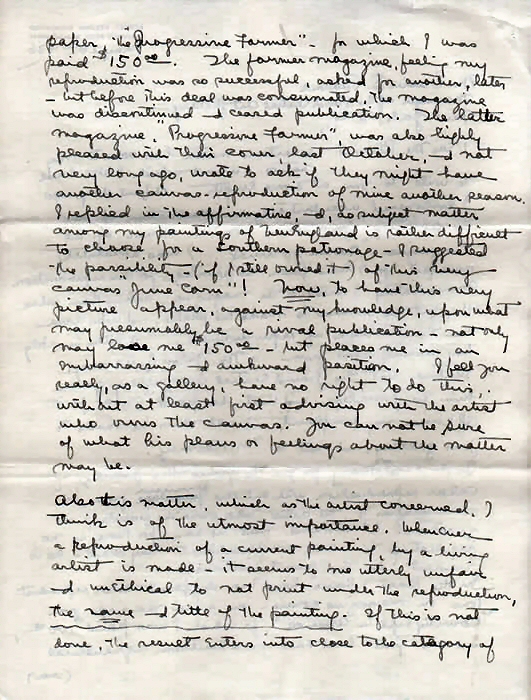
 pg 2
pg 2
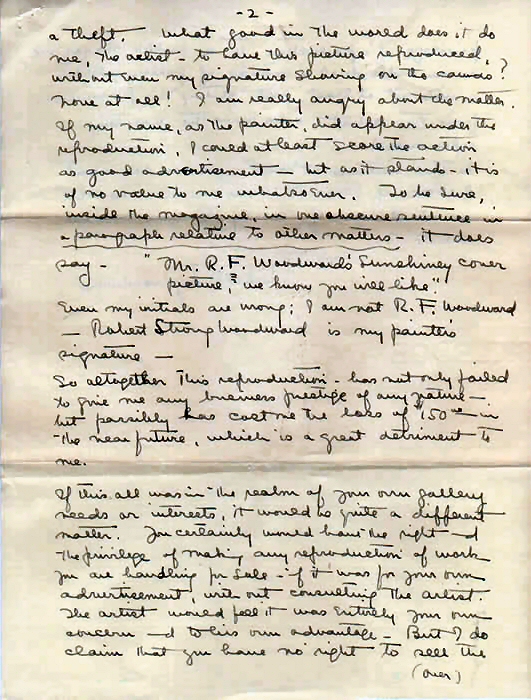
 pg 3
pg 3
